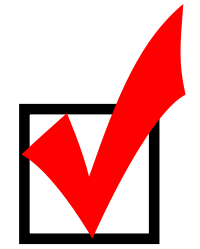Creating Your First Policies and Procedures Manual
(Revised and Republished 2/22/2017)
McDonalds is touted as an example of what every small business should strive for. Every action, every activity, every day is based on documented and tested policies and procedures that turn the business into a well oiled machine. But how do you get there?
New employees need to be trained. Existing employees need to perform tasks with the same level of quality each time. Updating business practices to comply with changed laws need to be communicated and all employees need to be trained on the changes. All this comes from a working set of policies enshrined in your procedures manual.
Every business is made up of processes. Every task in a service oriented or product based businesses can be broken down into various steps. Receiving mail, responding to client or customer inquiries, paying bills, even taking phone messages are all procedures. These tasks may need to be done every day or only when required. But whenever needed, the process can be performed repeatedly and can be measured.
What is a Policy and What is a Procedure?
A Procedure is the list of steps necessary to accomplish a task. The Policy is the collection of principals and reasoning behind the steps in the Procedure. Why a certain set of procedures is chosen is based on the business needs and decisions of your practice or shop. The policies need to be based on your operating choices and the legal, regulatory, or administrative requirements of your field. A complete listing or analysis of policies is beyond the scope of this article but evolves in your own business like a second skin.
What Makes a Good Procedure?
Plain and simple, a good procedure is just a list of repeatable steps that drive consistent quality with very short explanation.
In my experience, the best step is one that you can explain in one breath. The step should be an action not an explanation. Separating the policy from the procedure allows you to explain the reasoning of the policy apart from the actionable steps needed to accomplish the task at hand.
A good example of a step for receiving mail would be “1. Enter the sender name, address, and date of receipt into the mail log for today’s date.” The policy might be “all incoming mail should be tracked and an index reviewable.” If the step is clear and unambiguous, then it can withstand the test of training. A clear policy allows you to measure if the steps accomplish the goal of the policy.
Creating Your First Procedure
In my previous career I was a software engineer and architect. In that role I spent countless cycles turning business needs into software.
The process is often a translation of the business practice into a repetitive function that can be performed and tested. The method was always the same: find the best person to perform the task, watch them do it, and determine how to repeat it correctly. Break down their tasks into discreet steps and documenting each one is the key to the method.
The person to observe is called a subject matter expert (“SME”) – someone who is the most skilled and knowledgeable to perform the task and explain it to someone else.
Testing Your Procedure Out
The only way to test the procedure is to execute it against test data. In the case of a business procedure, that means repeating the steps with a non-expert, the Tester. The SME and the Tester each becomes quality control. The job of the Tester is to insure that the procedure is clear and comprehensible. The SME insures the accuracy of the procedure itself.
If the procedure is unclear, have the SME redefine the task so that the Tester can clearly understand it. If the result is inaccurate, determine the failing and have the SME retrace the steps with the Tester to locate the defect. Finally, re-execute the procedure and repeat until accurate.
Do remember that no one and no procedure is perfect. It may be that the SME themselves needs to improve.
Refining the Policies and Procedures
Business practices that do not evolve can be the slow death of a business. A practice that is not efficient drains the company resources. A practice that fails to comply with the legal, regulatory, or administrative requirements can result in costly fines, lawsuits, or termination of the business itself.
Once documented, a policy and procedure is ripe for refinement. The SME, business owner and legal counsel can review the policy as it changes over time or the business needs evolve. Once the policy is in place, the SME can retrace the procedure to achieve the policy’s goal.
Draft, retest, repeat.
A Template for Documenting Policies and Procedures
Policy/Procedure Number:
Policy: [Descriptive explanation of the particular policy behind this procedure. This should include the who, what, when and why of the policy, and save the how for the Procedures section below.]
SME Name: [List the person to contact for questions regarding implementation of the procedures.]
Definitions: [If there are specific definitions that are unique to the procedures, or if everyday words are defined in a specific way, they should be listed before the procedural steps are expressed.]
Procedures:
[List each step in a way that can be stated in short, actionable steps. If there are potential splits based on different conditions, you can use a “jump” such as “3. If the piece of mail is a bill for payment goto step 7”.]
Featured Image:Red Checkmark by Johannes Rössel from WikiCommons
